SkyGazer
Version 4.5
For Mac OS X and Windows
SkyGazer is an exciting introduction to the fascinating world of astronomy. It is an ideal companion for anyone first exploring the wonders of the night sky - the casual stargazer, novice astronomer, or classroom teacher.
Learn the names of the bright stars and watch the changing positions of the planets. Experience the seasonal cycle of the constellations and learn the mythology of these star groups. Find the prominent nebulae and galaxies that you can observe through a small telescope from your own backyard. Enjoy the spectacle of a meteor shower seen against the background of the Milky Way. SkyGazer is a celestial adventure for all ages.
Overview:
- View the sky from any place on Earth or in the Solar System, over a timespan of ten thousand years from the present.
- Display over 312,000 stars and over 14,500 star clusters, nebulae, and galaxies.
- Show hundreds of colorful deep sky object images generated from the 2nd-generation digitized sky survey.
- Solar system database includes all eight major planets and their moons, plus thousands of asteroids and hundeds of comets.
- Display realistic, close-up 3D views of the planets using NASA spacecraft imagery
- Uses interactive animations to demonstrate basic astronomical concepts like eclipses, the seasons, and precession.
- Contains a colorful illustrated guide to astronomical topics such as time, coordinates, the solar system, stars, and constellations.
- Print impressive color sky charts that you can use to find your way around the sky with binoculars or a small telescope.
Stunning Sky Charts Create detailed star charts that you can use to explore the night sky with binoculars or a small telescope, customized for your particular observing location or time. This star chart shows the rich southern Milky Way with zodical constellation figures. |
 |
Realistic Planet Graphics We've updated our maps of the Earth, Moon, and Mars; and added new high resolution maps of Saturn's moons from the Cassini mission. The code which draws the planets and their rings, moons, and shadows has been completely rewritten to include the effects of perspective and rotational flattening. |
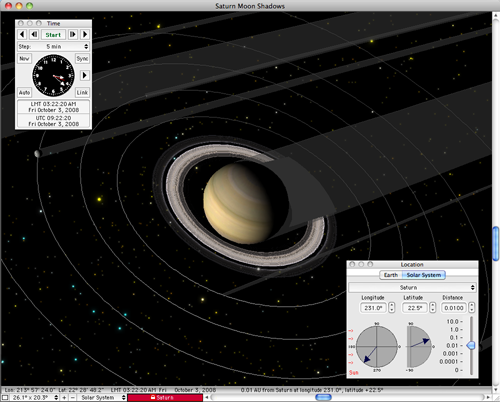 |
Solar and Lunar Eclipses Show lunar and solar eclipses as seen from the earth or from any point in space. This image shows the Asian eclipse of July, 2009. The view is from the far side of the moon showing the shadow cone of the moon moving across central China. |
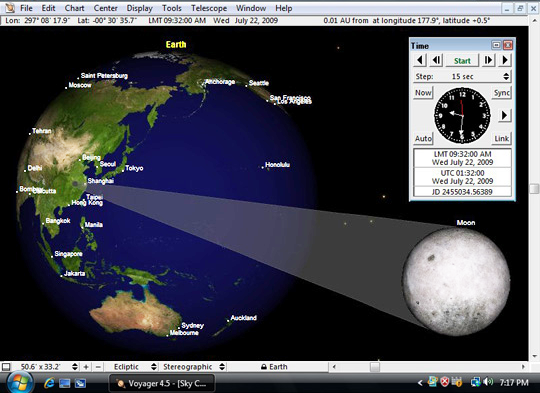 |
Historical Sky Simulations Recreate historical transits, conjunctions, eclipses, and other celestial events which occurred hundreds or thousands of years ago. This image shows the extremely rare conjunction of Mars and Jupiter in 1170 AD, when Mars actually passed in front of Jupiter. |
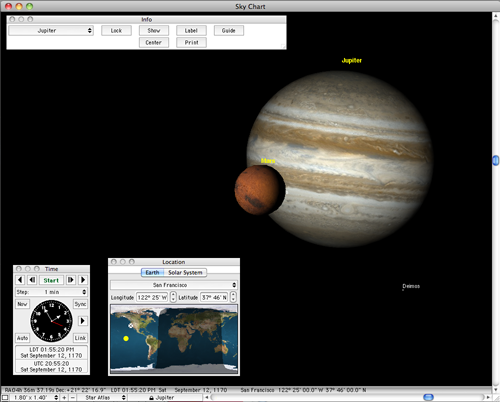 |
Seasons of the Earth Using colorful animations, SkyGazer illustrates basic astronomical concepts. Map the changing cycle of day and night on the Earth's surface. Study how the changing seasons result from the tilt of Earth's axis. Explore the seasonal change in the length of the day at different locations on Earth. |
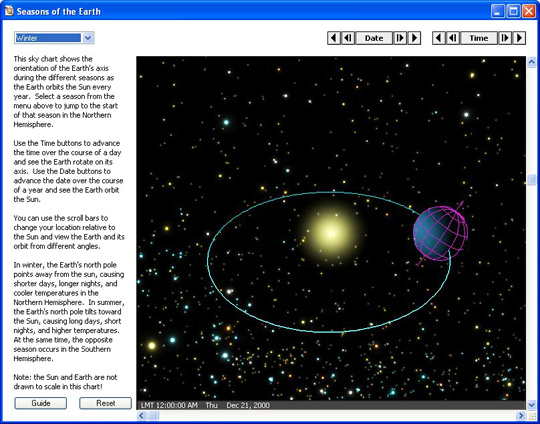 |
New Object Descriptions In addition to their numerical data, SkyGazer now includes textual, plain-English descriptions for literally thousands of stars, star clusters, nebulae, and galaxies, developed in conjunction with professor Jim Kaler of the University of Illinois. Learn "fun facts" about the objects you can see in the night sky! |
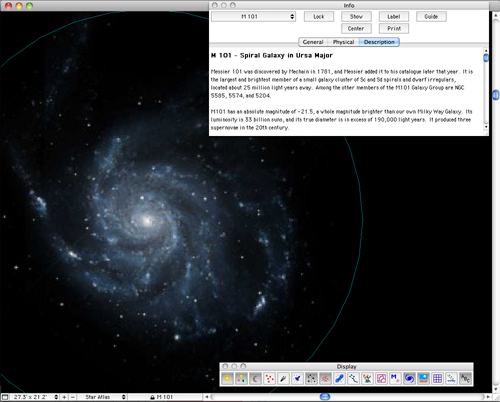 |
Eclipses - Shadows of the Earth and Moon Follow the path of the Moon as its shadow moves across the surface of the Earth during a solar eclipse. View ancient solar eclipses from any location on Earth and preview eclipses that will occur in the coming years. |
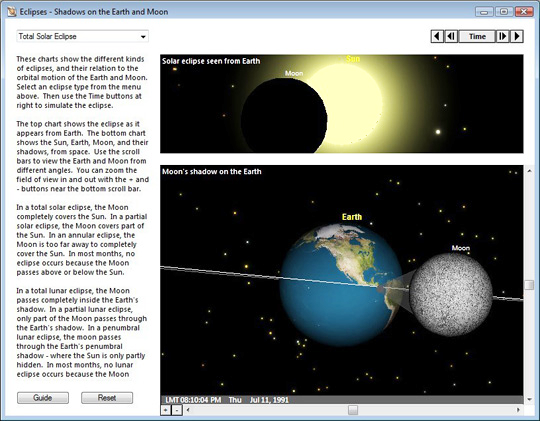 |
Phases of the Moon and Planets Follow the phases of the Moon and determine the conditions which produce lunar and solar eclipses. See the moon-like phases of Venus, the retrograde motion of Mars, the bright moons of Jupiter, and the changing appearance of the rings of Saturn. Investigate the nature and motion of comets and asteroids. |
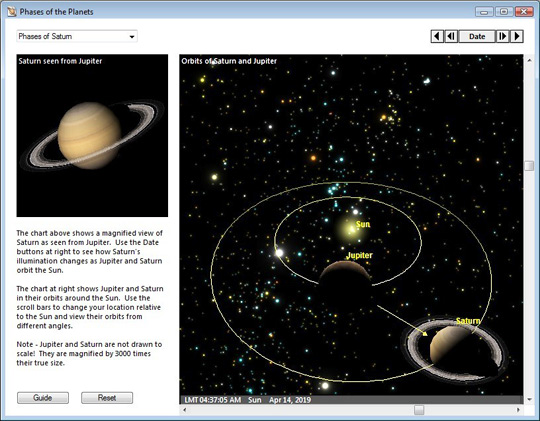 |
Paths of the Poles and Planets Watch the looping path of Mars and see how the Earth and Mars repeat this pattern every few years. See how the axis of the Earth precesses over thousands of years, creating many new "North Stars". Journey to the edge of the solar system to observe the clockwork motion of the planets. |
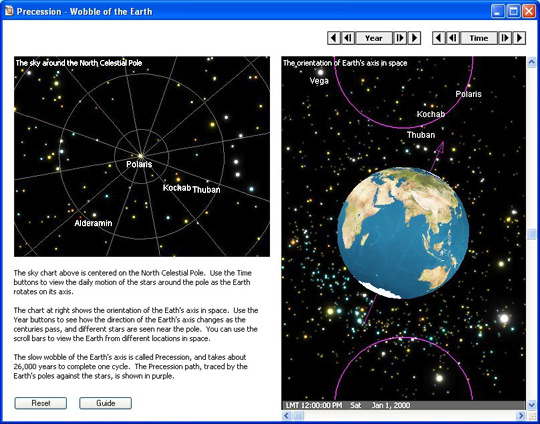 |
Copyright June, 2014
Carina Software & Instruments, Inc
